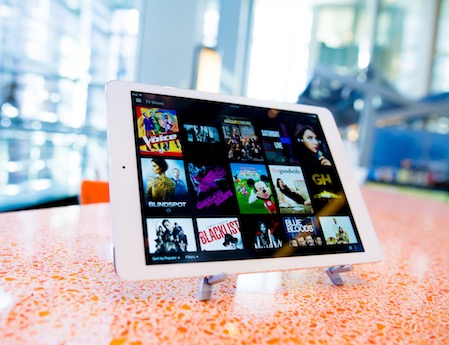Video Platforms Have Different Ad Recall Rates

A new study looked at the effectiveness of advertising as commercials appear in shows consumed on digital devices.
The study, conducted by Hub Entertainment Research in conjunction with the Council for Research Excellence’s Media Consumption & Engagement Committee, found different levels of engagement and recall depending on where and when the ads were viewed.
With more viewers watching programs on digital platforms, networks are looking to monetize those eyeballs by selling commercials, but not much is known about how TV-like advertising works on other video platforms.
Looking at non-linear platforms, including video-on-demand, personal computers, tablets and smartphones, it found that while TV screens can support full ad loads with reasonable recall, tablet and phones can have a recall advantage when loads are moderate or light. Meanwhile, computer recall was found to be low across the board.
Multitasking is a big factor in disengaging viewers from ads.
Digital and work-related multitasking significantly reduces attention and recall. Consumers are more likely to multitask when content contains full ad loads.
Users watching programming with light to moderate ad loads on tablets and phones were much less likely to multitask. That makes the combination of mobile device and a light ad load a sweet spot for attention and recall, the study found.
The smarter way to stay on top of broadcasting and cable industry. Sign up below
As an early CRE study found, bigger screens lead to more positive viewing experiences.
The report found some factors that influence ad impact and engagement.
Ad countdown clocks lead to greater break recall. Pre-roll ads are more likely to be tuned out than ads running in the middle of shows. Ad repetition helps with recall but leads to a more negative viewing experience.
Fast-forwarding is detrimental to brand recall but is used infrequently, the report found.
“We have learned that the ad experience across the different platforms has many variables that engage and impact ad attention, recall and multitasking," said Tom Ziangas, senior VP of research at AMC Networks, who led the projects as a member of the Media Consumption & Engagement Committee.
The CRE also released another study that used neuroscience techniques to look in to the mind of viewers as they are distracted by multiple screens.
In a lab that simulated a living room, eye movements were tracked to measure visual attention and cameras captured facial expressions to determine emotions. The object was to come up with better definitions of viewing and attention.
Solo viewers spent 58% of the time with an eye fixed on the ads. That dropped to 43% when they were co-viewing.
With access to second screens, solo viewers decreased to 34% in fixation time and co-viewers with a second screen to 25%.
The emotional engagement to advertising data was mixed, with co-viewing leading to a heightened emotional response but the introduction of a second screen resulting in a muted emotional response. Emotional response was measured using biometric devices.
"The study clearly shows how dramatically the way people watch TV has changed since the definition of what defines viewing, and the training process around that definition, was first established in the early ‘80s,” said Howard Schimmel, chief research officer at Turner Broadcasting and chairman of the CRE’s Neurometrics Committee. “We’re anxious to finish the last phase, and to work with Nielsen to evaluate any changes the study points to."
Jon has been business editor of Broadcasting+Cable since 2010. He focuses on revenue-generating activities, including advertising and distribution, as well as executive intrigue and merger and acquisition activity. Just about any story is fair game, if a dollar sign can make its way into the article. Before B+C, Jon covered the industry for TVWeek, Cable World, Electronic Media, Advertising Age and The New York Post. A native New Yorker, Jon is hiding in plain sight in the suburbs of Chicago.

